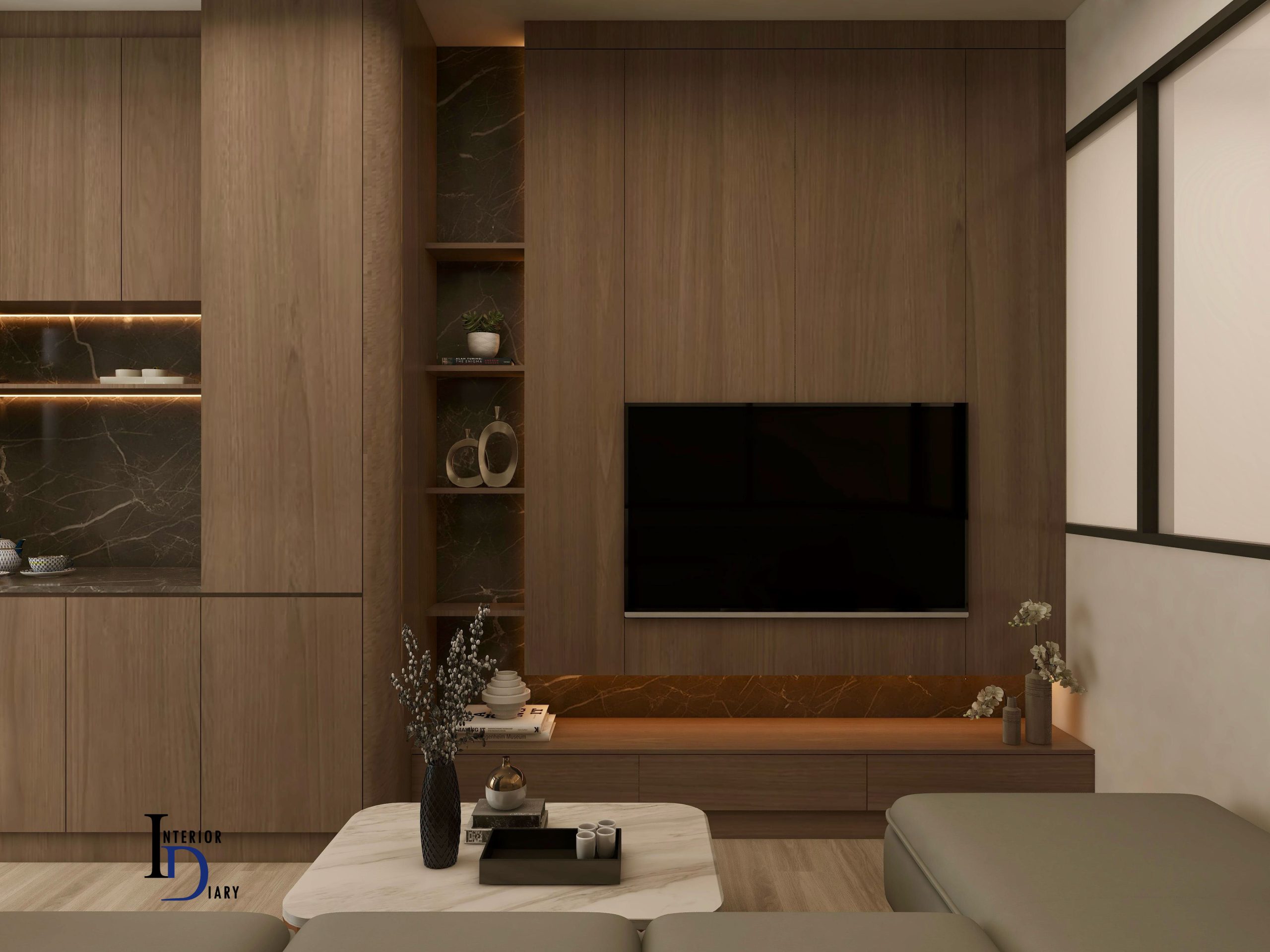
5-Room HDB Renovation: Style Ideas, Layout Tips & Cost Guide
A 5-room HDB renovation offers ample space for creative layouts and modern designs, but it also requires careful planning and budgeting. These larger flats (typically 5-room or executive flats) are “one of the largest HDB properties available” and provide a “dream canvas” for growing families. With more square meters to work with (often over 1,000 sq ft), homeowners can create open-concept living areas, multifunctional zones, and plenty of storage. At the same time, renovating a 5-room flat usually costs more than a smaller unit.
In this guide, we share renovation ideas for both BTO (brand-new) and resale 5-room HDB flats, highlight trendy styles (Scandinavian, Japandi, Wabi-sabi) and give an overview of costs and budgeting.
Open Layout and Practical Space Planning

Many families choose an open-concept layout to make the most of a 5-room flat’s generous living area. By merging the living, dining, and kitchen zones, the home feels bright and airy. For example, one renovated 5-room resale flat used a split-zone living layout: one side became the main lounge and TV area, while the other side was a kid-friendly nook with cushions and toys. This kind of zoning keeps the overall plan open, but defines separate areas with furniture and rugs. Open layouts also let parents “keep an eye on their young kids in the living room – whether they are cooking in the kitchen or working in the semi-open study,” enhancing family interaction.

Similarly, integrating study corners or work nooks is smart for today’s hybrid work/school needs. You can carve out a compact desk area along a wall or under a window, using built-in shelving and task lighting to keep it neat. In a 5-room flat, even the hallway or dining area can house a slim work desk. Glass partitions or low consoles help visually separate a study from the lounge without blocking light. In short, think zoning by function rather than building more rooms – it maintains flow while giving each activity its own space.
Another key to a functional 5-room HDB is hidden storage. With larger families, having lots of storage is a must. Designers often use platform beds with under-mattress drawers, full-height cabinets that blend into walls, and built-in media walls with concealed compartments.
For example, one design hid a sofa console and TV unit behind pocket doors, keeping toys and gadgets out of sight. Even kitchen islands can double as storage by adding deep drawers, and ottomans or benches can open up for stowing children’s playthings. These hidden solutions maintain a clean, minimalist look while keeping clutter under control, exactly what a bigger home needs for a streamlined feel.
Practical details like these make daily life easier. Floor layouts can include wide walkways and double worktops in the kitchen, or a window seat in the dining area. Designers also recommend including drop zones by the entrance (console tables and hooks) so keys and bags have a spot, and a multi-use foyer for jackets and shoes.
In short, plan your 5-room flat with both form and function: maximize natural light and flow, but ensure each corner has a purpose – be it playing, working, lounging or storing.
Popular Interior Design Styles: Scandinavian, Japandi & Wabi-Sabi
When it comes to aesthetics, our company’s focus on Scandi, Japandi and Wabi-sabi styles fits well with open, modern HDB living. All three favour simplicity and natural elements, which can make a big flat feel calm and cohesive.
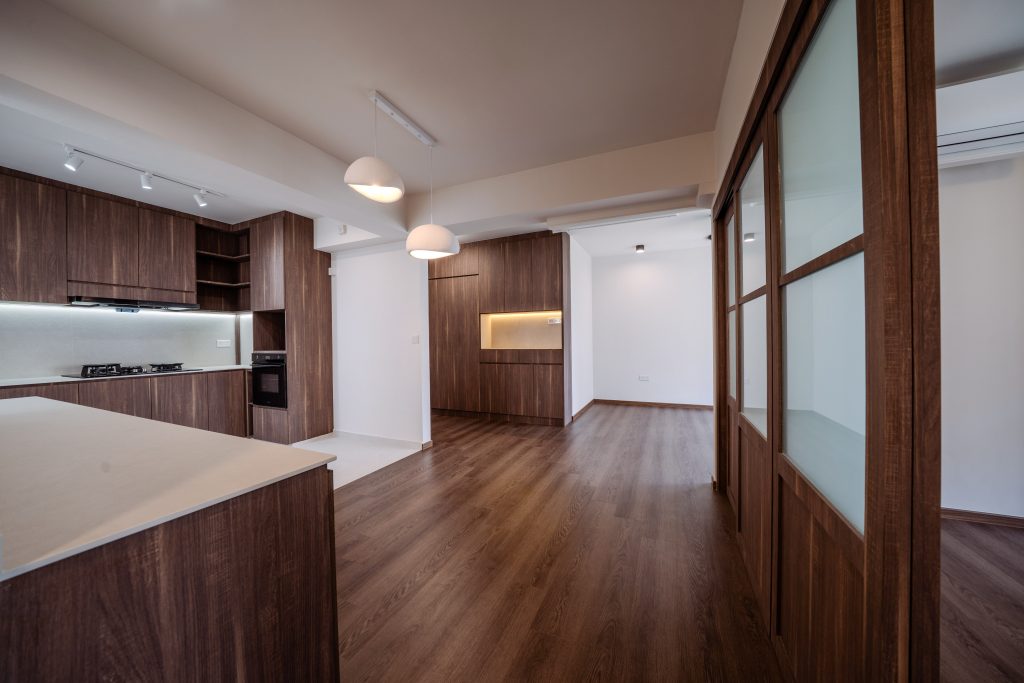
- Scandinavian (Hygge) style emphasizes a clutter-free, airy atmosphere. The key is simplicity: “simplicity lies in the details or of their absence. In practice, this means using clean lines, light neutral colours (whites, soft greys, pastels) and natural wood tones. Wooden flooring (often pale hardwood or vinyl), wooden cabinet faces, and occasional woven accents (like rattan lamps or wool throws) add warmth.
- Another guide notes that “wood is the main element of every Scandinavian interior design” – think birch or light oak across floors and furniture. A Scandinavian 5-room layout will be largely white or muted walls, with most furniture raised on legs to keep sightlines open. The emphasis is on minimal built-ins: only the essentials (like a simple TV console or wardrobe) are installed, with lots of breathing room between pieces. The result is a cozy, yet uncluttered home that looks bigger than it really is.
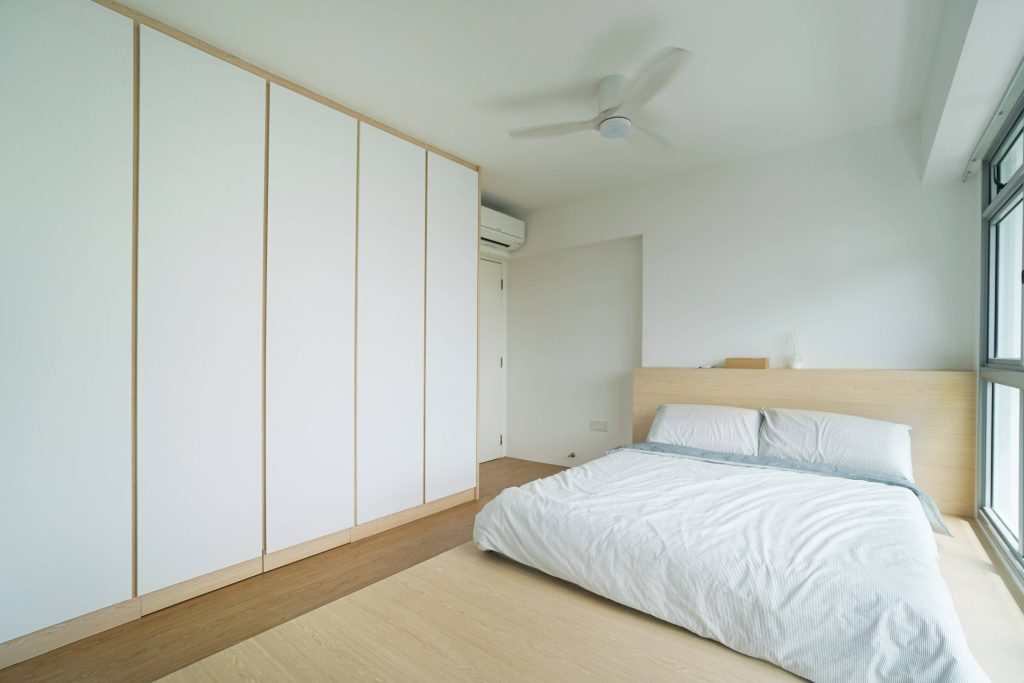
- Japandi style is a fusion of Japanese and Scandinavian aesthetics. It combines the Japanese minimalist approach with Scandinavian comfort, aiming for a balanced, harmonious feel. Japandi also uses clean lines and neutral palettes, but brings in subtle contrasts: a few darker wood accents or matte black fixtures against light walls, for example.
- A Japandi home will have simple furniture with slightly more refined shapes than raw Scandi. It values high-quality natural materials (teak, walnut or warm-toned woods) and craftsmanship, but still avoids ornamentation. One completed 5-room HDB featured a curved entry “lobby” and an island-dining table combo that added a gentle organic touch to the open plan – details that gave the space a restrained, “Japandi” character. In short, Japandi in a 5-room flat means calm neutrals, a touch of Zen (like a bonsai on the shelf), and balanced, symmetrical layouts.
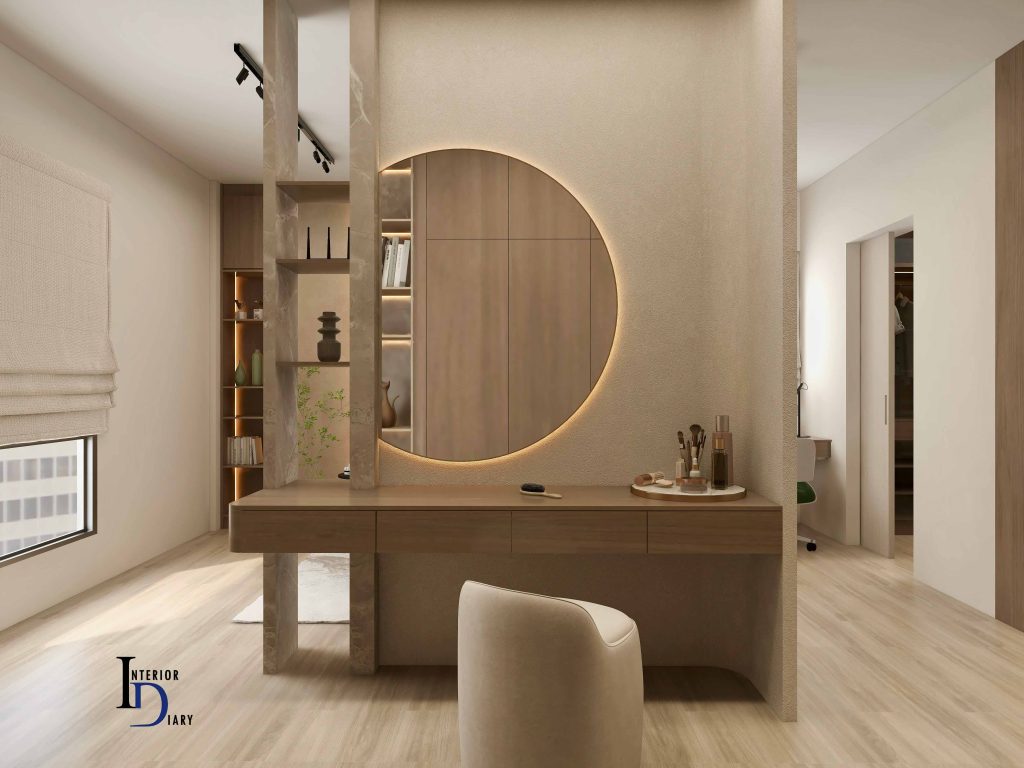
- Wabi-sabi style (also sometimes blended into Japandi) is inspired by Japanese philosophy. It finds beauty in imperfection, impermanence and natural aging. In a Wabi-sabi interior you’ll see earthy tones (terra-cotta, stone grey, muted green), textured handmade items (like a rough clay vase or hand-loomed rug), and simple forms that feel “authentic and serene”.
- Wood and stone surfaces might be left with visible grain or even slight warping. A Wabi-sabi 5-room renovation might, for instance, use a cracked-glaze tile as a backsplash or incorporate a weathered wooden accent wall. The philosophy is “less is more”: focus on a few cherished objects that age gracefully, and let empty space itself be part of the design.
All three styles share minimalist, nature-inspired roots: neutral, earthy colour palettes, functionality, and an uncluttered vibe. However, take note that these “built-in” looks can raise costs. Minimalist themes often require custom cabinetry and concealed fittings (for example, flush LED lighting or hidden storage mechanisms) to look clean.
As HomeRenoGuru explains, “minimalistic and Scandinavian interior design styles are more expensive to implement” because of the extra workmanship (like hiding pipes and wires). In budgeting, factor in that premium materials (like solid wood flooring or designer ceramic tiles) and intricate carpentry add up. That said, the payoff is a timeless, peaceful home that feels cohesive throughout all five rooms.
Practical Design Ideas and Hacks for larger HDBs
Here are some hands-on ideas proven in recent 5-room HDB projects:
- Split Living Zones: Instead of one giant empty hall, create sub-zones. For example, a long sofa can divide the TV lounge from a kids’ play corner. A two-tone floor tile or area rug can delineate the dining area from the foyer. Partial glass partitions (frosted or textured) are another trick: they block the view of a study area while keeping light flowing.
- Hidden Study Corners: Build a compact desk into an unused niche or along a corridor. A study wall with built-in shelves above the desk stays neat. In one project, a wall-mounted fold-down desk was fitted beside a window, so when folded up it was completely out of sight. This kind of integrated solution keeps the home uncluttered.

- Nature-Inspired Details: Bring in plants and organic materials to make the flat feel serene. Large potted palms or ferns in living areas, and herb planters in the kitchen window, add life. Use rattan baskets or a jute rug for texture. Light-toned curtains or blinds help maximize daylight. A “moss wall” or indoor planter box is an increasingly popular touch in Singapore homes to create a mini oasis.

- Hidden Storage: As mentioned, build storage into furniture and walls wherever possible. A TV feature wall can double as a full-height cabinet; a kitchen island can have drawers on both sides. These tricks were used in several award-winning 5-room designs to “ensure that space always remains clutter-free”. Even a bench seat in the balcony or yard can have lift-up storage.
- Child-Friendly Features: If you have young kids, incorporate safety and play space without sacrificing style. Choose rounded-edge tables, install cushioned vinyl or rubber flooring in one corner, and add creative wall stickers or chalkboard paint for a play area. In one family design, furniture and storage were arranged so that a kid’s play nook sits adjacent to the living room, keeping it visible but contained.
By combining these ideas (often used together in projects), you can make your 5-room flat both stylish and livable. A good approach is to sketch out zones on your floor plan first, allocate key built-ins (kitchen, wardrobes, TV wall) where needed, then refine details like colors and materials. Throughout, keep the flow open and avoid overcrowding – that’s the essence of modern HDB design.
5 Room Renovation Budgeting & Cost Breakdown
Renovation costs for 5-room HDBs vary widely based on scope, finishes and new vs. resale. According to recent surveys, the average budget for a 5-room BTO (new flat) renovation in 2024 is on the order of S$62,000–$70,000. For resale flats, which often require more hacking and upgrading, the typical range is higher – roughly S$84,000–$97,000 for a full overhaul in 2025.
These figures assume a complete renovation with quality materials (built-in carpentry, tiled bathrooms, new flooring throughout, etc.). Homeowners on a tighter budget may aim for the lower ends or cut back on non-essentials, while those seeking a luxury finish can easily exceed $100,000.
To give perspective, one renovation firm lists whole-house packages (for a 5-room resale) at about S$31,190 for a standard makeover (overlay method, basic finishes) and S$39,390 for a premium package (full hacking, higher-end materials). Of course, these package figures typically include just kitchen, toilets, floors and painting. If you add expensive stone countertops, designer fixtures, or customised wardrobes, your costs climb accordingly.
As a rough budget breakdown (the exact split depends on your priorities):
- Carpentry & Wardrobes: Typically consumes the largest share (often 30–40% of a mid-range budget), since kitchens and built-in wardrobes are custom-made.
- Kitchen Renovation: ~10–15% (or more if you include appliances/fittings).
- Bathrooms (2 toilets): ~10–15% total (depending on tiles, fixtures, hacking vs. overlay).
- Flooring & Tiles: ~15–20% (floor tiles or vinyl throughout, plus any wall tiling).
- Paint & General: ~5–10%.
- Electrical/Plumbing: ~5–10%.
These are illustrative; every project is unique. For example, choosing hardwood floors instead of vinyl can more than double the flooring cost, and full toilet hacking (removing old tiles) adds labour.
In general, “you can easily spend $50,000 and upwards” on a 5-room flat. Homeowners are advised to get several quotations and include a contingency (~10%) for surprises. It’s also wise to use a renovation budget calculator or checklist to allocate funds. Remember that a CaseTrust-accredited ID firm (if you use one) provides transparent quotes to avoid hidden costs.
Renovation Timeline & Approvals
Plan for about 6–10 weeks for a BTO flat, and 8–12+ weeks for a resale flat. New HDB flats (BTOs) often take slightly less time since there are no existing tiles or walls to hack out (plus many owners accept HDB-supplied fittings to save time). HomeRenoGuru notes renovations typically take “10 weeks for BTOs and 12–14 weeks for resales”. These timelines cover demolition, carpentry, tiling, painting and final touch-ups. Delays can occur if you make many design changes mid-reno or if there are permit hold-ups.
Speaking of permits, any major hacking or structural changes (like removing walls, hacking bathrooms, raising floors) require HDB approval. Window grille changes, door widening, and some plumbing works do too. It’s crucial to apply for the HDB Renovation Permit before beginning such works.
Most renovation firms (including us) handle this process for you. For example, experienced 5-room renovation contractors will obtain permits for hacking and electrical work as part of the service. Don’t attempt hacking without approval – doing so can lead to fines and halt your project.
Other considerations: If you live in the flat during renovation (common with resale), expect some inconvenience. The buzz of drills, dust and logistics (like where to cook) means you need a plan. Many families set up a makeshift kitchenette in the yard and clear out clutter from renovation zones.
Also, book your contractors at least a month in advance (renovation “peak” seasons are around late Q4 and pre-HDB completion dates), and coordinate deliveries of bulky items. A good interior designer (whether it’s us or another company) will help you prepare a timeline chart to keep the project on schedule.
Transforming your 5 Room Flat into something uniquely yours
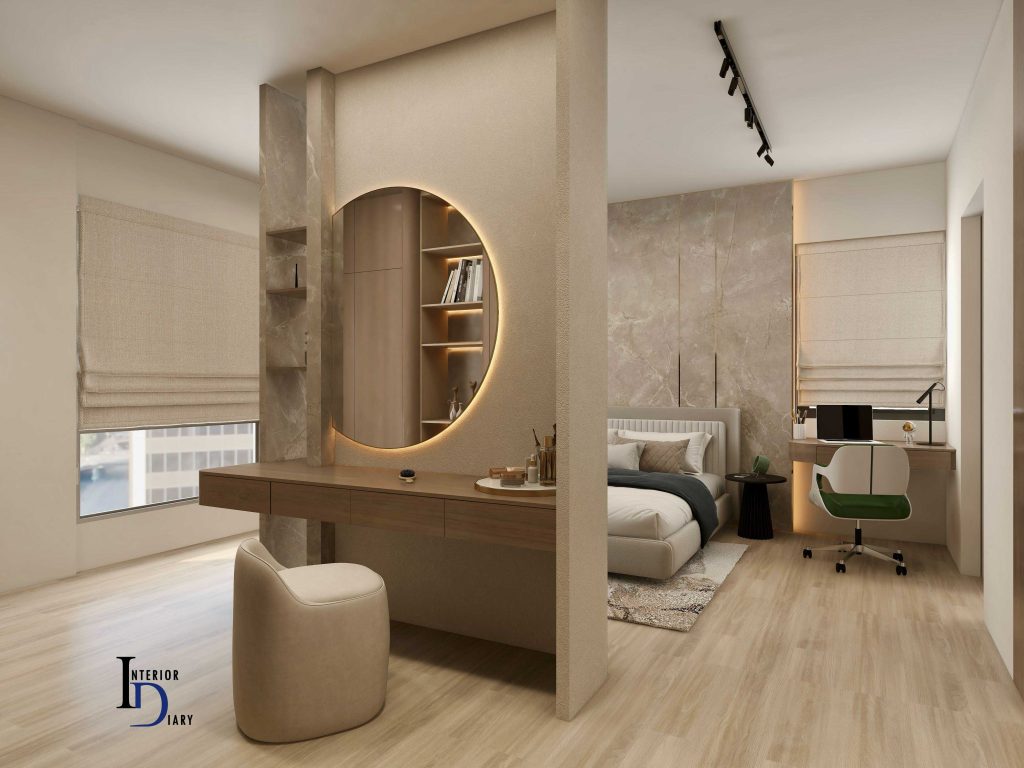
A 5-room HDB renovation is a major investment in comfort and lifestyle. By focusing on an open layout, leveraging natural light, and choosing a coherent design theme (Scandi/Japandi/Wabi-sabi as suits your taste), you can create a soothing, practical home for the long haul. Don’t forget the essentials: ample hidden storage, versatile built-ins, and child-friendly features if needed.
Before you start, set your budget early. Decide which rooms or features are most important (for example, you may splurge on kitchen cabinetry and take a simpler approach for guest bedrooms). Consult multiple IDs or contractors, check portfolios for similar 5-room projects, and read reviews or visit showflats. Finally, ensure the firm is HDB-licensed and (ideally) CaseTrust certified for peace of mind.
With clear goals and the right help, your 5-room HDB renovation can transform your flat into a beautiful, efficient home that fits your family’s needs and style. Good planning now will let you enjoy the extra space for years to come – whether it’s a bright Scandinavian-inspired living room, a serene Wabi-sabi bedroom, or a harmonious Japandi lounge.
Sources: Industry and magazine features on HDB renovations were used to compile cost estimates, timelines, and design tips. All figures and advice are referenced from recent Singapore renovation guides and “gasp” other companies.
*We have also written guides for 2 room, 3 room and 4 room renovations as well as overall BTO renovations.
